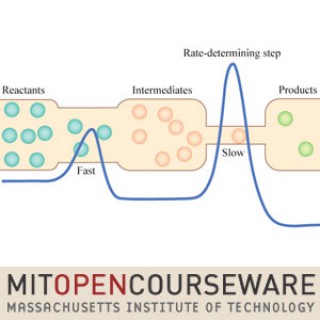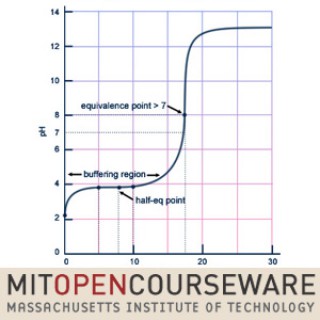Podcasts about vsepr
- 20PODCASTS
- 44EPISODES
- 25mAVG DURATION
- 1MONTHLY NEW EPISODE
- Oct 27, 2025LATEST
POPULARITY
Best podcasts about vsepr
Latest news about vsepr
- Chemistry VSEPR (Valence Shell Electron Pair Repulsion) Models for Molecular Geometry Thingiverse - Newest Things - Mar 18, 2025
- 11 Best Chemistry Apps for High School Students Educational Technology - Jan 21, 2023
Latest podcast episodes about vsepr
102725 L1 Chemistry 221 Video Lecture
Chemistry 221 L1 Video Lecture from October 27, 2025. This video covers material from Chapter 4 and Chapter 5 including molecular polarity, VSEPR, Valence Bond Theory (VB) and more. CH 221 website: http://mhchem.org/221 Let me know if you have any questions! Peace!
102425 L1 Chemistry 221 Video Lecture
Chemistry 221 L1 Video Lecture from October 24, 2025. This video covers material from Chapter 4 including violations of the octet rule, paramagnetic compounds, formal charges, VSEPR, and more. CH 221 website: http://mhchem.org/221 Let me know if you have any questions! Peace!
102325 L2 Chemistry 221 Video Lecture Part 2
Chemistry 221 L2 Video Lecture from October 23, 2025, Part 2 of 3. This video covers material from Chapter 4 including multiple (double and triple) bonds, exceptions to the octet rule, paramagnetic molecules, VSEPR and more. CH 221 website: http://mhchem.org/221 Let me know if you have any questions! Peace!
102325 L2 Chemistry 221 Video Lecture Part 3
Chemistry 221 L2 Video Lecture from October 23, 2025, Part 3 of 3. This video covers material from Chapter 4 including VSEPR with trigonal bipyramid and octahedral structures, molecular polarity, how to determine if a molecule is polar or nonpolar and more. CH 221 website: http://mhchem.org/221 Let me know if you have any questions! Peace!
011025 Chemistry 222 Video Lecture
Chemistry 222 Video Lecture from January 10, 2025. This video covers material from Chapter 7 including VSEPR, EPG and MG, bond order, bond energy and bond length, and more. CH 222 website: http://mhchem.org/222 Let me know if you have any questions! Peace!
011224 Chemistry 222 Video Lecture
Chemistry 222 Video Lecture from January 12, 2024. This video covers Chapter 7 of our textbook including formal charges, VSEPR theory, Electron pair geometry (EPG) and molecular geometry (MG), and more. CH 222 website: http://mhchem.org/222 Let me know if you have any questions! Peace!
\"Lecture-casts\"- A Podcast Lecture in General Chemistry - Remixed Lecture 11- VSEPR, Resonance and Other Ideas
In this episode we remixed and re-air Lecture 11 which discusses VSEPR, Resonance and others ideas. Here is the link to the youtube lecture.Lecture 11- Supplemental Lecture on :https://youtu.be/AM5MeJZJnSM Learn more about your ad choices. Visit megaphone.fm/adchoices Hosted on Acast. See acast.com/privacy for more information.
Where Students Get Stuck on VSEPR (and how to prevent it)
There are 3 places students get stuck in VSEPR:They never learn electron domainThey get confused on how many electrons to put in the modelThey confuse electron and molecular geometryIf you'd like to know how to fix or prevent those, then listen to the episodes.Intro to VSEPR worksheet
Official Video - Lecture-casts- Lecture 11- A Lecture on Resonance, VSEPR , Valence Bond Theory and Molecular Orbital Theory
Official Video - Lecture-casts- Lecture 11- A Lecture on Resonance, VSEPR , Valence Bond Theory and Molecular Orbital Theory. Learn more about your ad choices. Visit megaphone.fm/adchoices Hosted on Acast. See acast.com/privacy for more information.
\" Lecture-casts: A Podcast Lecture Series in General Chemistry\" : Chemistry - Lecture-Bowl- A Celebration of Athleticism and Academia
" Lecture-casts: A Podcast Lecture Series in General Chemistry" : Chemistry - Lecture-Bowl- A Celebration of Athleticism and Academia. A Remixed lecture of : "Lecture 11- A Lecture on Resonance, VSEPR , Valence Bond Theory and Molecular Orbital Theory" . In this episode, we produce a lecture that is both insightful and celebrates the athletic events occurring this year! Learn more about your ad choices. Visit megaphone.fm/adchoices Hosted on Acast. See acast.com/privacy for more information.
What's the Easiest Way to Teach Electron Domain?
How important is electron domain? Why do students bomb this easiest question on the VSEPR test? In today's episode, you'll learn a quick (and colorful) way to teach electron domain.
Lecture-casts- Lecture 11- A Lecture on Resonance, VSEPR , Valence Bond Theory and Molecular Orbital Theory
Lecture 11- Supplemental Lecture on :https://youtu.be/AM5MeJZJnSM Learn more about your ad choices. Visit megaphone.fm/adchoices Hosted on Acast. See acast.com/privacy for more information.
The APsolute RecAP: Chemistry Edition - VSEPR Theory
In this episode we define the acronym V-S-E-P-R and take a closer look at bonding and non-bonding electron pairs around a central atom (1:10). We distinguish between electron-domain geometry and molecular geometry (1:50). The episode describes the six electron-domain geometries (2:40) as well as the molecular geometries and bonding angles that arise from “mix and matching” bonding and non-bonding electron pairs (3:45). Balloons are a great tool to visualize these molecular shapes (7:00).Question: (8:06 )What is the molecular shape of NH3? trigonal planar, trigonal pyramidal, or tetrahedralThank you for listening to The APsolute RecAP: Chemistry Edition!(AP is a registered trademark of the College Board and is not affiliated with The APsolute RecAP. Copyright 2020 - The APsolute RecAP, LLC. All rights reserved.)Website:www.theapsoluterecap.comEMAIL:TheAPsoluteRecAP@gmail.comFollow Us:INSTAGRAMTWITTERFACEBOOKYOUTUBE
011020 Chemistry 222 Audio Lecture
Chemistry 222 Audio Lecture from January 10, 2020 covering material from Chapter 7 including VSEPR, applying VSPER to find EPG and MG, bond order, bond energy, bond length, and more. http://mhchem.org/222/classroom/zAudio/011020Chemistry222AudioLecture.mp3
011020 Chemistry 222 Video Lecture
Chemistry 222 Video Lecture from January 10, 2020 covering material from Chapter 7 including VSEPR, applying VSPER to find EPG and MG, bond order, bond energy, bond length, and more. http://mhchem.org/222/classroom/zAudio/011020Chemistry222VideoLecture.m4v
Chapter 7 Screencast - VSEPR Theory
A screencast from Chapter 7 in CH 222 which looks at VSEPR theory and how it can help us determine bond angles, etc. https://mhchem.org/222/classroom/zAudio/Ch09VSEPR.mp4
A detailed review of the covalent bond, one-on-one with your textbook author featuring you as our special co-host. Topics include: covalent bond formation, molecules, multiple bonds, VSEPR, substituents, molecular shape, polar bonds, and molecular polarity. The duration is relatively long because the pace is slow but methodical and guaranteed to improve your understanding and appreciation of this foundational chemistry. Duration: 1:08:13.
A Level Chemistry - Shapes of Molecules
Time to get into shape! Jono goes over the molecular geometries you need to know for your A Level Chemistry exam. In this episode, he will look electron repulsion, VSEPR theory, and bond angles. Ideal for preparing you for your A Level Chemistry exam. For more info visit: https://www.senecalearning.com/blog/a-level-chemistry-revision/.
Lecture 12: The Shapes of Molecules: VSEPR Theory
Topics: The Shapes of Molecules: VSEPR Theory (Molecules without Lone Pairs and Molecules with Lone Pairs)
This video briefly reviews the simplifications and assumptions of the VSEPR model.
This short video is an introduction for VSEPR
This short video reviews the names of the electronic and molecular geometries associated with expanded valence compounds.
This short video works out three examples of predicting molecular shape based on the Lewis structure of the molecule.
Chemistry 1. VSEPR Theory -- a way to predict molecular shapes based on the repulsion of valence electrons.
Chapter 8 Screencast - VSEPR Theory
A screencast from Chapter 8 in CH 222 which looks at VSEPR theory and how it can help us determine bond angles, etc.
Valence Shell Electron Pair Repulsion (video) August 11th 2008
The pairs of electrons that exist in the valence shells of atoms repel each other as far as possible. This repulsion helps determine the shapes of molecules formed in covalent compounds. This chemistry video podcast shows some of these possible shapes and explains their formation. (Some of you have experienced difficulties with the audio on the previous version of this episode. I have re-recorded the soundtrack in this podcast. Let me know if this solves the problem. Richard)
Lecture 29: The Shapes of Molecules: VSEPR Theory
Introduction to chemistry, with emphasis on basic principles of atomic and molecular electronic structure, thermodynamics, acid-base and redox equilibria, chemical kinetics, and catalysis. Introduction to the chemistry of biological, inorganic, and organic molecules.
valence shell electron pair repulsion (video) jan 27 07
The pairs of electrons that exist in the valence shells of atoms repel each other as far as possible. This repulsion helps determine the shapes of molecules formed in covalent compounds. This podcast shows some of these possible shapes and explains their formation.
valence shell electron pair repulsion (audio) jan 27 07
Hi, this audio file is a copy of the soundtrack from the podcast 'valence shell electron pair repulsion (video) jan 27 07'. I hope that these audio files prove useful. Please let me know, one way or another.























